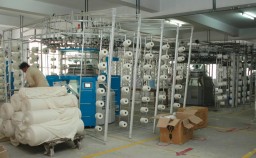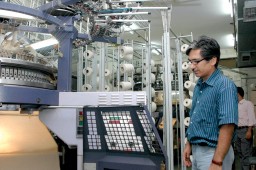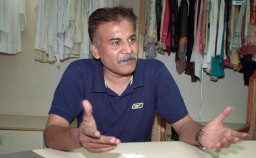
The export dream for many players in the North has gone bust with prices under severe pressure, leaving them with practically no operational margins.While the small volume exporters working with boutiques and small store set ups are still doing reasonably, well medium and bigger players are struggling to balance their business model in the wake of shrinking lead times, price pressures, compliance norms, archaic labour laws, non-availability of trained manpower and an appreciating rupee, many of which factors are beyond their control.However, even in this very difficult situation, many players are working to find the niche/strategy that will help them to stay on track.Apparel Online met players from various hubs in the NCR- Gurgaon, Manesar, Noida and Faridabad for a clearer picture of realities at Ground Zero…
Why has the NCR been the worst affected…. is a question that has an unanimous response from all the exporters in the region. Too much dependency on fashion products that requires outsourcing of different techniques and hand work, which slows down the production process; excessive overheads because of extravagant working styles, migratory labour with no employer loyalty, laid back attitude of management that is still in the pre-quota era time warp, neglect of the importance of middle management and training, accommodating unreasonable demands of the buyers at the last moment for fear of losing business are some of the common rejoinders that both the exporters and buyers quote when quizzed. Today, exporters in the NCR are assessing the future and strategising for the present, more so as buyers are now preferring to work with the South.

Finding the going very difficult, many exporters in the NCR are opting out of the business and the second generation sees better options in more lucrative areas like retail, entertainment and hospitality, all of which are linked to real estate. “Our factories are assets and sometimes it is tempting to just move out and give the premises on rent which will give returns at par or even better, but with no headaches,” muses Rajeev Khetal, VP Operations, Vishesh Overseas, Udyog Vihar. Escalating real estate value and the option that they represent are attractive alternates and an easy way out of a business that is increasingly becoming difficult to sustain. Though there is business in the market, the prices and lead times are difficult for many to meet. “How long can a person run a factory without profits with so many tethers,” questions Animesh Saxena, MD, Neetee Clothing.
While many in the region are looking towards the government for support in the way of subsidies and increased drawbacks, others have taken the challenge head on and are re-working their manufacturing and marketing strategies to find sustainable solutions. “The most important thing to do at this time is to identify the strengths – it could be product, service, infrastructure, commitment to deliver or management attitude, while working on the weak areas to improve further,” says NP Sawhney, MD, Sawhney Export House, Noida. But it is easier said than done. “We are making changes to meet the challenges, but they are not enough,” admits Sawhney. Each exporter has to find his individual recipe for sustenance.

Dedicated Factories
Knowing and understanding the buyer and the product is one of the keys for survival. “Buyer dedicated factories is the only way forward,” argues Roshan Baid, MD, Paragon Apparels, Noida who has seen 200% growth in 2006 working with companies like Reebok and adidas through dedicated units. With the support of these companies Paragon has diversified into products using specialised performance synthetic fabrics, which very few companies in India are doing. “An in-depth understanding of the product and how best to control quality is essential to eliminate any chances of rejections,” adds Nitin Batra, MD, Fabstract Clothing India Pvt Ltd, Noida. Fabstract, specialising in knits with focus on value-added products has seen 20% growth in 2006. Both these companies claim to be booked to capacity because of their dedicated facilities.

Integration
Further, greater control over the supply chain has become critical. “Integration of operations is now a must, to cut down on lead times and control cost and quality. Players in knits are increasingly bringing knitting and processing into the unit and I have done the same,” says Manish Gupta, Director, Richa Knits, Manesar. The company already has 14 knitting machines in operation and another 20 are being installed in a new unit in Faridabad that will also boost of the most modern processing unit in this country. “The unit we are putting up is the most advanced both in capacity and technology as it is fully computerised, eliminating the man from the process,” says Manish. The capacity of the processing unit will be 40 tonnes per day, which, according to Manish, is the highest in India today.
Many activities, which were earlier outsourced, have been brought in-house like embroidery, printing, washing and finishing. “We have even started transfer printing and labelling in-house,” says Roshan. The company is proud of a record 100% on time delivery schedule maintained over the last one year. “It is important to invest in servicing the buyer better and in most cases the buyer responds with more business,” adds Roshan, who is expecting another 150% increase in top lines this year.

Consolidation of operations spread out over a number of units is also underway for greater integration. “We have shifted to Manesar, despite all the teething problems, so that every operation is under one roof to save time and money on coordinating efforts to stay competitive,” says Vineet Sood, Director, Katyaini Images, specialising in flat and circular knits. While Shima Seiki flat knit machines are installed for sweaters, the company is now investing in circular knitting machines for complete integration.
Start processing of order requirements immediately
Integration also implies integration of work so that there is no break in the system and the T&A (time and action) calendar created at the beginning of the processes is dutifully followed. “We were in the habit of sleeping over orders but today, we start work the day an order sheet is received. Raw materials are identified and orders placed. Once the fabric comes in, quality checks are undertaken immediately and if there is any problem in the batch, the supplier is approached for replenishment. All this is finalised well in advance and lots are cut and bundles ready even before lines are available, saving on critical time,” says Mukta Malhotra, MD, SAAR and partner Apparel Solutions.

Having successfully run a buying operation for the last 22 years, Mukta is managing an export house for the last one year in Gurgaon, “We initiated the manufacturing unit to see if operations could be done differently from how exporters were undertaking the process. After one successful year I can say truthfully that it is difficult but not impossible,” she opines.
Control Overheads
To survive, overheads have to be brought under control and the beginning is to control wastages. Companies have started monitoring daily expenses and overtime is permitted only if there is a real need. “Earlier, factories did not control expenses and by the end of the year, the balance sheet reflected overheads as high as 25-30%; even now 15% is a norm, but with margins so low we are trying to bring it down further, it is very difficult,” bemoans Rajeev Khetal. Costing is now related to the offered price made by buyers working backwards to match the price at each level of operation, closely monitoring where expenditures can be brought down. Daily or weekly meetings to review performance are the strategy and each department is allotted a pre-determined budget to work in.

Factories now have to justify expenditures. “There are only two ways to stay above board- control overheads and reduce rejections,” stresses Irfan Khan, Director, VK International. He only echoes a reality, which all have realised but only some are addressing directly. Keeping track of cost of production is also important. But with the recent hike in wages in Haryana, the budgets have gone haywire. No doubt a hike of over 33% from Rs 2800 to Rs 3500 is substantial, taking into consideration the already stressed bottom lines. “The increased wage rate would jack up cost by 2-3% depending on the product,” says Irfan Khan. Adds Rajeev, “On an average, there is only 5-7% margins on basic products and 15-20% on niche products; any added cost is a killer.”
Training
At Neetee Clothing, Animesh has undertaken a complete radical change to stay ahead. In-house worker training, worker welfare programs, washing facilities and product diversification are some of the efforts for a complete rejuvenation of the company. Contract labour, which is a majority, is very arrogant and complacent. Absenteeism is rampant and low productivity is a vice. To challenge the system, a small group of exporters in Udyog Vihar have collaborated with the Okhla Cluster Association for tailor training of helpers and women into sewing operators to increase the pool of employable labour. “Fresh workers perform better and also pose a threat to unproductive workers, so the attempt is to challenge the so called skilled labour with an alternate,” says Nimeesh. Neetee Clothing has also hired the services of a consultant for productivity enhancement training.

Improving Productivity
Improvement in production processes and methods is also an area of focus for many companies. “We are working to reduce the man machine ratio as helpers only add to the time and cost. A hydraulic trolley that can easily carry large loads in one go and is easy to push by a single man has reduced helpers by 15% on the knitting and cutting floor,” says Manish. Automation may be the option for companies like Richa Knits, but for those working on smaller quantities, it is more economical to function on a teamwork method. “The type of product and quantities that we do is not conducive to assembly line production; besides, most workers in this region prefer to work on piece rate as most of them are trained tailors,” argues Animesh. He feels that for the type of work the NCR is doing productivity is an issue more of labour management than SAM calculations.
Product Development
Product Development has become a key to success. Dedicated sample rooms with a PD team holding a prime place in the organisation structure is seen at almost all garment export units in the NCR. “We can no longer survive on basics and the only option is to move up the value chain,” argues Rajeev. Reasons Nitin, “How can a person doing Old Navy shirts for $2.35, playing with 15 cents, survive when 10% appreciation of the rupee has already knocked 23 cents off his margin? We have to create a cushion by working on products that are $7 and above.” Adds Irfan, “The North is a master in hand work and we are channelising this strength to create high-value offerings for brands like Monsoon and Anthropologie at quicker lead times and better prices.” Masters and sampling rooms are not enough and designers are working round the clock to create lines based on themes and expected trends.
Getting samples ready on time is also very important as the buyer is talking to many vendors for the same job. The PD cum Sample room is an important area, as business is generated from what is conceived and developed there. “The best way to beat the cost crunch is to service the customer with inputs that he is not interested to invest in,” adds Rakesh Sadh, MD, The Design Sangrah, Noida. Neetee Clothing has hired two designers, one from France and the other from Italy to create and market lines for the company. “Business has to be done on a global platform, be it production or design,” explains Animesh.
The going is no doubt difficult, but a new found seriousness in the players from the NCR sees many more owners on the shop floor, the accounts room and at design collection presentations. The industry may be shedding weight, but the churning will separate the men from the boys.






